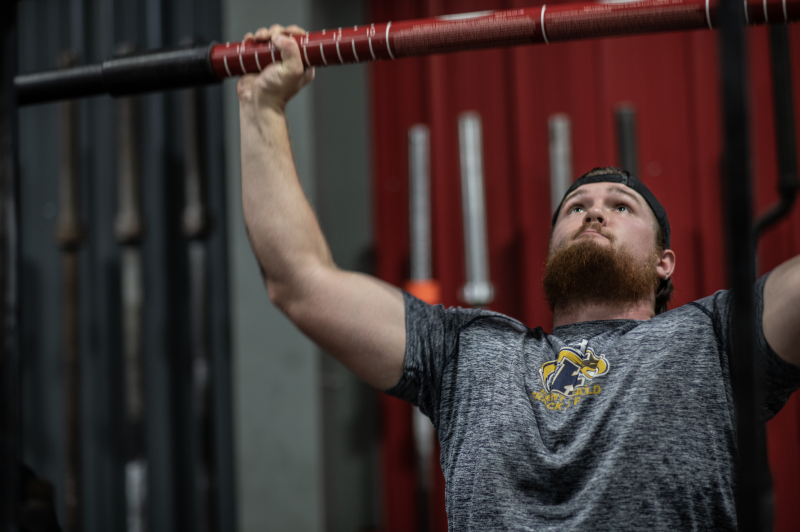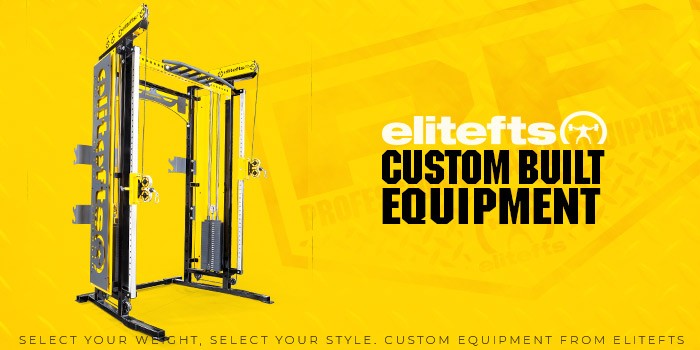
One of the most common arguments against using the max effort method with athletes or lifters is that “there isn’t enough time under tension….” This might be true. That is, until you watch someone perform a max effort lift and actually start your special “coach who likes to tear shit down that they don’t truly understand” stopwatch and realize that when the athlete starts to create tension, the time they actually finish the lift is very similar to a set of 3-5 normal reps. Dave pointed this out to me a few months ago, and I thought it was a great point. As accurate as he is, my point is not to argue the max effort method and TUT. My point is that the max effort method is not in our programs to provide TUT: it’s there to provide a neural stimulus that other methods can’t while keeping the volume on that movement low (high training adaptation with low athlete breakdown). If you are running a Conjugate System, the supplemental (second barbell movement) and accessory work is where you are seeking time under tension. So, even though max effort work may provide what you are looking for in that sense, we are going to focus on how to manipulate your accessory work to break down and build tissue and to increase work capacity while not kicking the shit out of your athletes.
Learn to Train X — Teach Your Athletes How to Train
The purpose of accessory work is to bring up the weak areas of the athletes. It is the time when we do what most people would consider bodybuilding. The difference is, we’re building the body to better perform at a sport, not go on stage in posing trunks. Bill Kazmier referred to this as building your armor. The Max Effort Lanes and Dynamic Effort Lanes are aimed at primarily training the nervous system while your accessory work is building tissue.
The Accessory Lane is a great opportunity to do a couple of things. First, we can add a lot of volume in the off-season for athletes who need developing. If you are wise about your exercise selection, you can do this without overtraining. Typically, we will start the volume low and build it up over the course of three weeks, and then, we will switch the exercises. This allows the body to adapt and to build in an automatic volume deload on the first week of a new program. Utilizing your accessory work correctly can also have a great effect on your injury rates. All too often I see people making the mistake of thinking that bigger is better when picking Accessory Lane movements. This is not always the case. For example, during in-season programming, most of the time, choosing smaller-scale single-joint accessory work is the better option because these movements are less taxing on the player but still stimulate the muscle groups we need to keep active and firing. That being said, when we are in off-season training, we can push harder and use more compound movements in the training if that’s what will benefit our athletes the most. We typically did one day of more taxing accessories (max effort day) and one day of less taxing accessories (speed days). This allowed us to follow a high/low model of programming to help our athletes to recover. The Accessory Lane is also a great opportunity to specialize your programming for various sports and populations. This can be done with exercise selection, rep tempo, contraction types, and set and rep schemes. Your options are nearly endless here, as accessory reps can be as low as five and as high as 300 total. DO NOT underestimate the importance of this lane.

Variations for the Accessory Lane
Training can seem a lot like work, especially if you’ve been training for many years. This is one of the biggest reasons why variability in your program is important. Below are some examples of ways to change things up for your Accessory Lane movements. The only one we use on the supplemental lift (second barbell movement) on a consistent basis is the slow eccentrics. I feel it’s better to use the other variations with special or “isolation” exercises, where there is less of a chance of messing up the movement. Remember, the object here is to get time under tension, not time off due to injury. The smaller movements also allow us to do a lot of work for specific regions without being trashed for the next training session. If you were to do too much of this with larger compound movements, you’d be run into the ground pretty quickly. These are not groundbreaking techniques that have never been used before, but I bet there are at least two that you haven’t done in quite awhile.
Slow Eccentrics
This is probably the most boring of the methods to get more TUT, but it’s very effective. Most people just go in and bang out reps on their accessory movements. So, if you take some time and slow your eccentric counts down to three, four, five, or six seconds, you’re going to help to stimulate some tissue you haven’t hit in quite some time. I have recently started this in my own training, and I feel that it’s helping tremendously. Along with helping to build some tissue, I am noticing some aches and pains going away, too. I think the decreased force incurred at the reversal point has a lot to do with this. We have also been slowing our eccentrics down on some of our speed and dynamic work with some success. My athletes from back in the day should be glad I just re-discovered this one.
Pick Up Your Pace
Speed up your rest periods’ slow mo! If you are by yourself, catch your breath and go again. If you are with a training partner, try to hop on the exercise and go as soon as he or she is done with his or her set. See if you can get your partner to lean on something before you have to. Kick his or her ass and compete a little bit. Throw your stopwatch out, and start training harder.
Supersets
“We used to do crossfit; we called it supersets!” Pair up a couple of exercises, and use the time you get to do the other movement as your rest period. Let’s face it: you ain’t making “the games,” but it wouldn’t hurt for you to sit on your ass less while training. Being more time efficient will allow for more work to be done and at a greater volume. Start with three rounds on week one, and increase the number of rounds each week by one or two.
Timed Work
Instead of doing a movement for reps, do it for time. One minute is probably the most common, but sometimes we’ll do ab stuff for 3-4 minutes straight. Increase the time by 15-30 seconds each week.
Cluster Sets
Pick a weight you think you can do 20 times. Set your clock for two minutes the first week, three minutes the next, and four minutes on week three. Start your clock, do 8-10 reps, rest 15 seconds, and repeat 8-10 reps. Continue this cycle for the prescribed time, and try not to let go of the implement.
Circuit
I don’t do these very often, to be honest. I am a scatterbrained fool, and keeping the stations organized drives me nuts, let alone directing 20 athletes through them. They are a good option, though, if you have the attention span for them. Start at two to three rounds, and add one each week. Timed sets on these are usually easier to manipulate than reps.
Sometimes the best training tools are the ones we have forgotten about or haven’t used in a couple of years. Follow some of these guidelines on your accessory work. Your time under tension and work capacity will jump up, and you won’t kick the shit out of yourself or your athletes with big compound movements.










